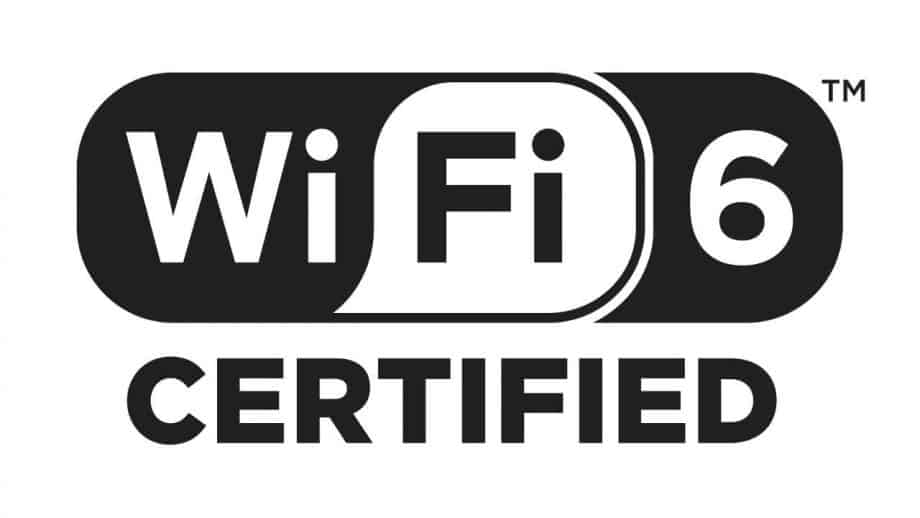The movement toward a Wi-Fi 6 network mirrors the widespread adoption of 5G cellular technology. The reason businesses will upgrade to Wi-Fi 6 is driven by factors ranging from security concerns and increased customer and compliance demands, to the need for enhanced bandwidth as more devices come online. Regardless of the specific trigger, Wi-Fi 6 industrial barcode printers, in particular, will become a crucial component of future-proofing your warehouse operations.
Benefits of Migrating to WiFi 6
WiFi 6 (802.11ax) can bring several significant benefits to both individual users and businesses. Here are a few reasons why you should consider making the switch:
1. Increased Speed and Capacity
WiFi 6 offers faster maximum speeds compared to previous WiFi standards. This is achieved through more efficient data encoding, resulting in higher throughput. Even in environments with many devices, WiFi 6 can maintain high-speed connections.
2. Better Performance in Crowded Environments
One of the key improvements in WiFi 6 is its ability to perform well in dense environments, such as apartment buildings, distribution centers, healthcare facilities, stadiums, and offices. Features like Orthogonal Frequency Division Multiple Access (OFDMA) and Multi-User Multiple Input Multiple Output (MU-MIMO) allow for better resource allocation and simultaneous communication with multiple devices.
3. Improved Battery Life for Devices
WiFi 6 introduces Target Wake Time (TWT), which allows devices to negotiate when and how frequently they wake up to send or receive data. This reduces the amount of time a device needs to keep its antenna powered on, leading to improved battery life, particularly for IoT and mobile devices.
4. Enhanced Security
WiFi 6 devices are required to support WPA3, the latest WiFi security protocol. WPA3 provides stronger data protection and improved defenses against brute-force attacks, ensuring a more secure connection.
5. Lower Latency
With features like OFDMA and improved MU-MIMO, WiFi 6 reduces latency, which is crucial for applications that require real-time communication, such as video conferencing, inventory tracking and management. and logistics applications.
6. Better Support for IoT Devices
WiFi 6 is designed to handle a larger number of connected devices efficiently, making it ideal for IoT ecosystems where many devices are connected simultaneously.
7. Future-Proofing Your Network
Adopting WiFi 6 ensures that your network is prepared for future demands. As more WiFi 6-enabled devices become available, having a WiFi 6 network will ensure you can take full advantage of their capabilities.
8. Improved Range
While WiFi 6 doesn’t necessarily increase the maximum range of WiFi, its improved efficiency and performance in signal management can lead to better performance at longer ranges.
9. Better Overall User Experience
All these improvements contribute to a smoother, more reliable internet experience with fewer dropped connections and buffering issues, providing a better overall user experience.
Migrating to WiFi 6 is a forward-looking move that can enhance your network’s speed, efficiency, security, and capacity to handle a growing number of devices and data-intensive applications. Whether for a home environment or a business setting, the benefits of WiFi 6 can provide a noticeable improvement in wireless connectivity and overall network performance.
Security threats, digitalization projects, and the rising tide of cybersecurity breaches are converging to make Wi-Fi 6 adoption not just a choice but a necessity. The day your organization powers up its Wi-Fi 6 network will prompt the need to update your printers for both performance and security reasons.
The Migration Process
The process of migrating to Wi-Fi 6 printers does take some planning and expertise. A reassessment of operations is required, considering factors such as the mobility of your workforce, the number of devices printers need to connect to, and the efficiency of connectivity. Security, often overlooked in printer considerations, emerges as a key factor, especially in an era of escalating data security threats.
It is vitally important to align devices with network capabilities. A cybersecurity incident, for example, may cause you to transition to Wi-Fi 6. However, if your hardware devices are not updated as well, you expose yourself to vulnerabilities associated with outdated devices on a new network.
Large retailers and warehouse operators are adopting Wi-Fi 6, not only for security reasons but also for its ability to handle a greater volume of devices compared to 5G. The move to Wi-Fi 6 is not just about security; it’s about optimizing performance and accommodating the evolving needs of a digitally connected environment.
Do not assume your Wi-Fi 5 printers will seamlessly integrate into a Wi-Fi 6 network. Consider the broader landscape and use this transition as an opportunity to enhance operational efficiency, security, and connectivity. Selecting the right Wi-Fi 6 printers involve evaluating factors like workforce mobility, device connectivity, and overall network performance.
Integration of RFID Printing
The integration of RFID capability into barcode labels is becoming more common today for a number of reasons, further emphasizing the need for mobile RFID printers. Warehousing, retail, and healthcare sectors are recognizing the demand for mobile printers in diverse applications, necessitating a shift to Wi-Fi 6 printers for efficient and secure operations.
The move to Wi-Fi 6 is not just an upgrade; it’s a strategic decision to fortify your business against ever-evolving, complex challenges. By aligning your devices, including your printers, with an advanced network infrastructure, you position your organization for improved performance, enhanced security, and a more robust return on investment. The key to success? Thoughtful planning and a strategic approach will ensure a seamless integration that propels your business forward. Connect with us today for help navigating this transition effectively.


